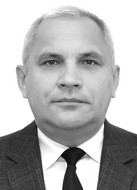Spinal traumas and disorders prevention in athletic training process
Фотографии:
ˑ:
Dr.Med., Professor E.G. Skryabin1
PhD, Associate Professor E.T. Kolunin1
1Tyumen State Medical University, Tyumen
Subject to combined medical examinations under the study were the 10-16 year-old trainees (n=98) specializing in different sport disciplines and diagnosed with lumbar-sacral pains due to spondylolysis (defect in the pars interarticularis of the vertebral arch) and spondylolisthesis (anterior or posterior slipping or displacement of one vertebra on another). It was found that the pain appeared after 3-5 years of active sports at the advanced sport specialization stage. The pains followed by pathologies were generally reported to occur as a result of strenuous physical loads and special lumbar segment overstretching exercises. Such physical practices, when they are long enough, are associated with the growing risks of spondylolysis and spondylolisthesis in the LV vertebra. The authors list the key symptoms of the lumbar spinal disorders. Based on the study data, we recommend that in case of such complaints coaching specialists should refer junior athletes to competent traumatologists and orthopedists. The children diagnosed with the lumbar spinal disorders are recommended to abstain from spine stretching, jumping and standing/ sitting weight training practices or weight carrying practices.
Keywords: athletic training, spinal cord diseases, spondylolysis, spondylolisthesis.
References
- Bannikova R.A., Andruskaya O.A., Pogrebnyak A.A. Vertebralnye bolevye sindromy u podrostkov: diskussionnye voprosy [Vertebral pain syndromes in adolescents: discussion issues]. Sportivnaya meditsina, 2014, no. 1, pp. 25-31.
- Delyagin V.M. Boli v poyasnitse u fizicheski aktivnykh podrostkov [Back pain in physically active adolescents]. Sportivnaya meditsina: nauka i praktika, 2016, no. 4, pp. 86-92. DOI: 10. 17238/ISSN2223-2524.2016.4.86.
- Kolunin E.T. Konvergirovanie sredstv gimnastiki v protsesse nachalnoy podgotovki sportivnogo rezerva [Gymnastic means convergence in initial training process of sports reserve]. Teoriya i praktika fiz. kultury, 2015, no. 12, pp. 22-25.
- Mikhaylovskiy M.V., Sadovoy M.A., Belozerov V.V. Skolioz i spondilolistez: obzor literatury [Scoliosis and spondylolisthesis: literature review]. Khirurgiya pozvonochnika, 2017 no. 3, pp. 23-31. DOI: 10.14532/ss2017.3.23-31.
- Prokopyev N.Ya., Kolunin E.T. Profilaktika obostreniy dizontogeneticheskikh zabolevaniy pozvonochnogo stolba u detey mladshego i srednego shkolnogo vozrasta na urokakh fizkultury [Prevention of exacerbations of dysontogenetic diseases of spinal column in primary and secondary school children at physical education classes]. Fizicheskaya kultura: vospitanie, obrazovanie, trenirovka, 2001, no. 2, P. 59.
- Skryabin E.G. Spondiloliz i spondilolizny spondilolistez LV pozvonka u detey doshkolnogo i mladshego shkolnogo vozrasta [Spondylolysis and spondylolysis of vertebral LV spondylolisthesis in pre-school and primary school children]. Vestnik novykh meditsinskikh tekhnologiy, 2014, no. 3, pp. 72-76. DOI: 10.12737/5903.
- Skryabin E.G. Spondiloliz i spondilolizny spondilolistez nizhnikh poyasnichnykh pozvonkov u detey i podrostkov [Spondylolysis and spondylolysis of lower lumbar vertebrae in children and adolescents]. Geniy ortopedii, 2017, no. 1, pp. 71-73. DOI: 10.1809/1028-4427-2017-23-1-71-73.2.
- Assad A.P., Abreu A.S., Seguro L.P. Spondyloptosis in athlete. Rev. Bras. Reumatol., 2014, vol.54 (3), pp.234-236.
- Bartochowski L., Jurasz W., Kruczynski J. A minimal soft tissue damage approach of spondylolisis repair in athletes: preliminary report. Eur. J. Orthop. Surg. Traumatol., 2017, vol.5, pp.12-17. DOI: 10.1007/s00590-017-1974-0.
- Grodahl L.H., Fawcett L., Nazareth M. Diagnostic utility of patient history and physical examination data to detect spondylolysis and spondylolisthesis in athletes with low back pain: a systematic review. Man. Ther., 2016, vol. 24, pp. 7-17. DOI: 10.1016/J.math.2016.03.011.




 Журнал "THEORY AND PRACTICE
Журнал "THEORY AND PRACTICE